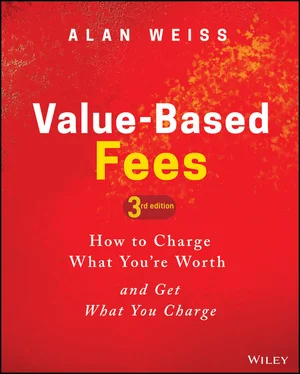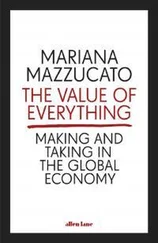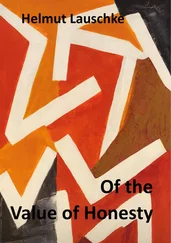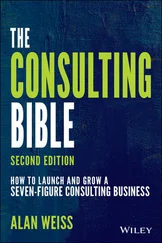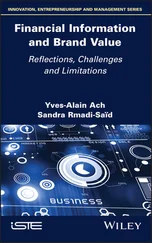Logic makes people think, but emotion makes them act. When I was confronted with the need for a wrench, sending me to the unfamiliar hardware store, I found three wrenches, all alike, at three different prices. I chose the most expensive on the “emotional” basis that it was probably made from better materials (I had zero evidence of that). Some people will buy a brand name they recognize on that same basis, which is why we'll focus on the relationship between fees and brands later in the book.
When a woman asked me in 1985 if I'd like to have one of the very first car phones in New England (the last four digits were 2468 at my request), I didn't do a cost analysis or ask for references; I told her to get over to my place and I'd cancel my afternoon appointments. Ego needs are quite legitimate and very powerful buying catalysts. Today I carry the latest iPhone in my pocket; it works through my car's sound system (but I wouldn't mind looking into a mastodon steak if possible).
At some point, of course, there was the question of how many days, how much time , how much presence was required, and time became a measurement of value. Yet it's interesting that a field hand might have been paid by the day or a teacher by the lesson, but the great artists were paid by results . Michelangelo, da Vinci, Beethoven, and Mozart were commissioned to create works of art, not to work by the day or to be “present.” Some of these works took years and there were vast gaps between the commission and the fulfillment thereof. Da Vinci was famous for lugging works around with him that were in various stages of completion, including the Mona Lisa. Michelangelo required four years to complete the ceiling of the Sistine Chapel, despite the imprecations of Pope Julius who, understandably, wanted to see it in his lifetime.
For our purposes here, and for your purposes in terms of future success, “value” pertains to the quality and power of the results delivered. There is no value in a training program, a book, a focus group, a strategy session, a coaching engagement, unless there is a demonstrable tangible and/or intangible result of quality and pragmatic application . By “intangible” I refer to ego fulfillment, aesthetics, comfort, security, and so forth. Not all value is monetized, and in fact some of the greatest value is intangible, such as an improvement in self-esteem or closer relationships and intimacy.
As we continue, please bear in mind that this type of thinking is a question of “mind-set.” You have to believe that the result is the key, and not arbitrary “deliverables,” those darlings of the human resource crowd, or the time required. Cole Porter, Salvatore Dali, Thomas Alva Edison never worried about the time required to create value.
However, there is a second aspect about this mind-set that is overarching: Charging by a time unit is unethical.
I mean that as harshly as it's written. I read a piece on social media while writing this book from an Australian accountant who pointed out that if you charge by the hour (as most accountants still do) you “run the risk of cheating yourself of greater income.” What he meant is that if you're good and fast, an advantage to your client, you get paid less. If you're slow and inept, a disadvantage to your client, you can make a lot more money.
This is the inherent unequivocal problem with fees based on time units or “showing up”: They abuse your client relationship or they undermine your ability to earn money. Every client deserves fast and quality results, and every professional services provider deserves equitable compensation based on the results they create.
I don't believe anyone ever asked Picasso how long it took to paint Guernica . Some expert valuations place it at a worth of $200 million. That is not a typo. At a $1,000 an hour, an incalculable fortune in Picasso's time, he'd need 200,000 hours to equal the $200 million price by the hour. That's about 22 years. He lived to 91, so perhaps working round-the-clock he might have done it.
That agricultural transformation, as well as ego fulfillment and including great results not based on time, are a function of an abundance mind-set .
It's insufficient to possess abundance. One must be willing to use it . We must move from a poverty and scarcity mentality to an abundance mentality. If the farmer with a surplus decided it was best to keep it and protect it for that proverbial “rainy day,” there would be nothing with which to pay for a tutor or fence repair. And some people, no matter what their income or savings or prospects, act as if they're poor .
You've all seen this: the otherwise successful people who never pick up a check, who take modest vacations, who have ten-year-old cars, whose houses need maintenance. These are people continually asking if they “really” need something as an excuse not to spend money on an acquisition. We've all seen elderly people who have ardently saved through their lives only to lose it all in a health crisis or scam. 1
I once asked a group of coaching clients at an event what they would do if they unexpectedly gained $600,000 via a client request for work, or a lottery winning, or an inheritance. Most spoke of partial savings, some philanthropy, some personal acquisitions, vacations, and so on. But one woman said to me, “I wouldn't touch a cent of it, it would sit in the bank!” 2
Thus, we experience people with significant growth and prosperity who continue to act as if they were desperately trying to gain a foothold, to keep their heads above water. I call the need to change based on true prosperity securing the “watertight doors.”

Figure 1.1 The Watertight Doors
In Figure 1.1you can see the progression from trying to survive, to being “alive,” to having “arrived,” and finally to thrive. Survival takes pressure off, then “alive” means you have a “going concern,” as the accountants like to say. “Arrive” denotes a brand and recognition within your field, with unsolicited referrals coming your way. And “thrive” is the expert and thought leader, one who sets the paces and is used as a reference point for excellence.
The problem is that many people to the right of my chart still act as though they're on the left , never having been able to abandon old habits and old friends. To transit from left to right, we must be willing to change our beliefs, friends, image, self-talk, expectations, affiliations, and so forth. That's the only way to create “watertight” doors that don't permit us to slide back.
I talk to people too often who tell me in the same sentence that they're having their best year ever but can't afford to invest in their own self-development, or give to charity, or take an unexpected vacation. You may see this as hypocrisy, but I see it as an inability to leave a poverty mentality that enabled them to survive but not enjoy their arrival or beyond.
The abundance mind-set is not merely about money. It's also about time, information, volunteerism, support, and so forth. In other words, an abundance mentality is denoted by generosity . The most successful people I know are also among the most generous I know.
You can begin each day as a long-slow crawl through enemy territory or as having the potential for great opportunity. Thinking abundantly is a mindset and a permanent disposition. It's not a motivational technique or a fad.
Not long ago, so many people burned their feet at a fire-walking (hot coals) session that extra EMTs had to be called! My conclusion is that they just weren't motivated enough! Trodding hot coals does nothing for your life, unless that's the only route to your office. But creating and maintaining a positive and abundance mind-set will enable you to enjoy life, be resilient, and constantly appreciate your own worth for others, which just happens to determine your fees.
Читать дальше
